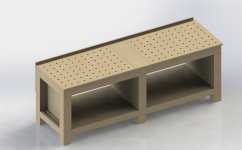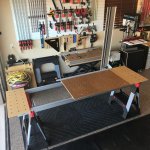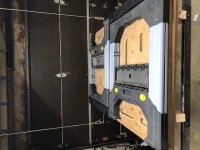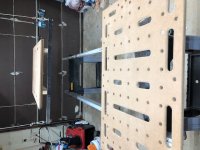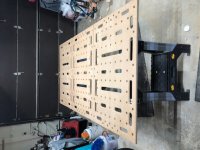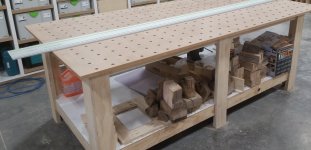I will be building a new workbench before too long, and figuring on putting MFT tops on it. It would be 8' long and basically look like image below, just to match the look of my other workbenches. I would be using the Festool tops rather than making my own. The area below the top would be storage. My other workbenches have drawers, but I am not sure that is the best idea for an MFT type workbench. I might put hinges doors on this one for better bottom access. Can I please have some opinions:
1) Should I have good bottom access to the underside of the MFT tops ?
2) Dust build up. You think it would be a good idea to put a sheet (possibly removable) to protect dust falling through the holes ?
3) I am playing with the idea of putting a flip-down rail in the center, for cross cutting. but I already have a fair sized table saw with a good miter guide. For those with both, do you commonly go to the table saw or the flip down rail ?
1) Should I have good bottom access to the underside of the MFT tops ?
2) Dust build up. You think it would be a good idea to put a sheet (possibly removable) to protect dust falling through the holes ?
3) I am playing with the idea of putting a flip-down rail in the center, for cross cutting. but I already have a fair sized table saw with a good miter guide. For those with both, do you commonly go to the table saw or the flip down rail ?

